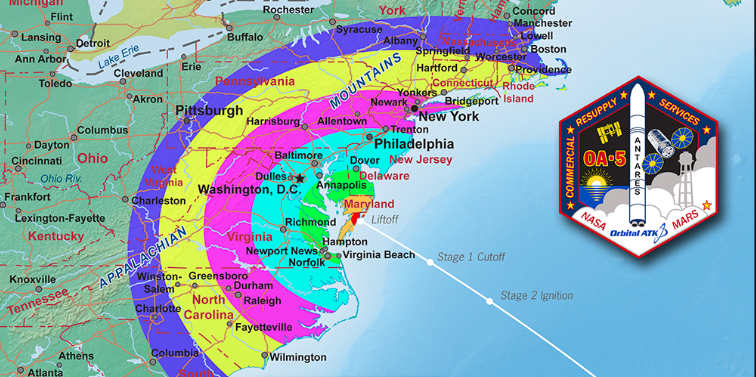You have a couple of excellent reasons to look up in the sky tonight: not only do we have a supermoon coming into the sky, but you'll also be able to see some NASA activity happening when the International Space Station becomes visible around 7:30 p.m., and NASA launches a rocket from Virginia shortly afterward. All of this will be best visible from the water.
(For more information on viewing opportunities, click here.)
This month we're seeing a Hunter's Moon, called such because it rises in the sky about 30 minutes after the sun sets, giving hunters more light overall during a 24-hour period. It's closer to earth than usual, which is why it's called a supermoon. We're coming into a three-month period of supermoons, with the November 14 supermoon set to be the most impressive. But don't let the next three months get you too comfortable: the next time the moon will be this close to Earth will be 2034.
At 8:03 p.m., NASA will be launching its first rocket from the DelMarVa peninsula in the last three years. The rocket is set to carry roughly 5,000 pounds of food to the crew onboard the International Space Station, and will be visible from the Eastern Shore as early as 30 seconds after the launch, a full minute if you're in the Annapolis area. The launch has been pushed back due to Hurricane Nicole, currently active off Bermuda, but is not set for a-go.
The Baltimore Sun reports that:
A rocket hasn't lifted off from the spaceport's main launchpad since Oct. 28, 2014, when an explosion mid-launch caused $15 million in damage to the launch pad, plus the loss of the $200 million Antares rocket and its cargo. The accident left behind a crater 50 feet long by 30 feet deep, cracked a reinforced concrete wall beneath the launch pad iand blew away stairs around it. Repairs were completed by the end of last year.
If you're stuck inside, never fear: you can watch the launch of the Antares rocket live at space.com.





